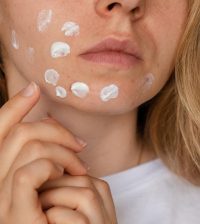- Pig Kidney Removed After Historic Transplant in Alabama Woman
- Smart Shirt Might Predict Heart Problems
- Gun Violence Leads To Skipped Dental Visits, Lost Teeth
- ERs Treat A Gunshot Wound Every Half-Hour
- Miscommunication Between Health Workers Puts Patients At Risk Regularly
- In-Hospital Addiction Consultations Put Opioid Users On Path To Recovery
- FDA Announces Plan to Phase Out Some Animal Testing
- CDC Denies Milwaukee’s Request for Help on Lead in Schools
- Fisher-Price Recalls 253,000 Baby Toys Over Choking Risk
- Two Deaths in Oregon County Linked to Fatal Brain Disorder
Do Sporty Teen Girls Live Longer, Healthier Lives?

Women who exercised or played sports as teens have a lower risk of premature death from cancer or any other cause much later in life, new research shows.
The study of thousands of Chinese women aged 40 and older found that those who exercised roughly 80 minutes a week as teenagers had a 16 percent lowered risk for death from cancer and a 15 percent lowered risk for death from all causes. Participation in team sports during the teen years had almost as strong an effect.
“Adolescent exercise participation was associated with reduced risk of mortality in later life regardless of adult lifestyle or socioeconomic factors,” said lead researcher Sarah Nechuta, an assistant professor of medicine at Vanderbilt Epidemiology Center and Vanderbilt-Ingram Cancer Center in Nashville.
“Our findings support the importance of promoting the initiation of regular exercise participation in early life and across the life course to prevent sickness and death from cancer and other chronic diseases,” she added.
Women who exercised both as teens and adults benefited most all, with risk for death from all causes and death from cancer reduced by 20 percent and 13 percent, respectively, the researchers said.
For the study, researchers used data on nearly 75,000 women, aged 40 to 70, who took part in the Shanghai Women’s Health Study. The women, who were enrolled from 1996 to 2000, were asked about exercise participation between ages 13 and 19.
Over an average of almost 13 years of follow-up, nearly 5,300 women died, including more than 2,300 from cancer and 1,620 from heart disease.
Women who had played on teams as teens had a lower risk for cancer death later in life by 14 percent, and lower risk of death from all causes by 10 percent, the researchers found.
Exercise was also associated with reduced risk of heart disease.
The report was published in the August issue of the journal Cancer Epidemiology, Biomarkers & Prevention.
Nechuta cautioned that because the participants in the study self-reported the amount of exercise they did as teens, there could be errors in the findings. The study only found an association rather than a cause-and-effect link between teen exercise and later health.
Although the participants were Chinese, Nechuta thinks the results would apply to American women as well. “There is no major reason that the overall association would be different for U.S. women,” she said.
The researchers said that exercise improves immune function, reduces inflammatory factors, decreases insulin and insulin-like growth factors, improves cholesterol and reduces blood pressure, all of which can have lifelong benefits.
While Nechuta isn’t sure if these findings would apply to men, another expert is more optimistic.
Alpa Patel, strategic director of the American Cancer Society’s cancer prevention study, said that there is no biological reason why men would not also gain lifelong benefits from exercise in adolescence.
“This study is more evidence that maintaining a healthy lifestyle from early in life is important to reducing long-term disease risk,” said Patel.
And just because you weren’t active as a teen doesn’t mean it’s too late for exercise to benefit your health, she added.
“There is a lot of evidence to support that being physically active in your adulthood is beneficial to long-term disease prevention,” Patel said.
More information
For more on the benefits of exercise, visit the U.S. Centers for Disease Control and Prevention.
Source: HealthDay
Copyright © 2025 HealthDay. All rights reserved.










